Arthropoda is the largest phylum in the animal kingdom, with a possible 10 million. Copepod larvae are known as nauplii, and they swim using their antennae. In addition to these well-adapted groups, occasional representatives of other groups have become at least semiterrestrial. The color comes mainly from the blue pigment alpha-crustacyanin and the red pigment astaxanthin. The pill bug goes by many namesroly-poly, woodlouse, armadillo bug, potato bug, but whatever you call it, it's a fascinating creatureor actually 4,000 species of creature. [50] The auction for the crab quota in 2019, Russia is the largest revenue auction in the world except the spectrum auctions. The body of a crustacean is composed of segments, which are grouped into three regions: the cephalon or head,[5] the pereon or thorax,[6] and the pleon or abdomen. Jennifer Kennedy, M.S., is an environmental educator specializing in marine life. The legs in front or back are a little ahead or behind in the movement sequence. The cladogram below shows Brachyura's placement within the larger order Decapoda, from analysis by Wolfe et al., 2019. Hone your math skills with our flashcards! [64] Over 60% by weight of all crustaceans caught for consumption are shrimp and prawns, and nearly 80% is produced in Asia, with China alone producing nearly half the world's total. Baleen whales feed on nothing but krill. While ADW staff and contributors provide references to books and websites that we believe are reputable, we cannot necessarily endorse the contents of references beyond our control. Shrimp, on the other hand, can have anywhere from six to twelve legs. Crustaceans are primarily dioeciousmade up of male and female sexesand therefore reproduce sexually. Within the literally thousands of species, there is a wide variety of feeding techniques among crustaceans. Rare and geographically isolated species are found in karst caverns which get little if any light from the surface. [43], Numbers of extant and extinct () species are given in brackets. There are over 75,000 species of crustaceans worldwide. Crustaceans have compound eyes (made up of lots of lenses) on stalks and two pairs of antennae, which help them to sense predators. They are also common in freshwater environments, such as lakes, rivers, groundwater and temporary pools, but not to the same level of diversity. [37][38] Most Jurassic crabs are only known from dorsal (top half of the body) carapaces, making it difficult to determine their relationships. Survival in freshwater depends upon an organisms ability to keep its blood concentration at a level higher than the medium and to reduce the permeability of its body surface. shrimps, crabs, lobsters, water fleas, and relatives, 2020 Regents of the University of Michigan. Cookies collect information about your preferences and your devices and are used to make the site work as you expect it to, to understand how you interact with the site, and to show advertisements that are targeted to your interests. Ethology., 126(3), 344352. The walking legs, including specialized chelipeds, may be used to help capture prey. Why fibrous material has only one falling period in drying curve? Get a Britannica Premium subscription and gain access to exclusive content. They have jointed appendages that provide protection, support, flexibility, and increased surface area for muscle attachment. The nocturnal crustaceans have seven pairs of legs, segmented sections like a lobster's tail, and prefer humid environments. Like all arthropods, crustaceans have a hard (sometimes very hard!) They have an exoskeleton to protect their body and two pairs of antennae to sense the environment around them. Male decapods can copulate only when their exoskeleton is fully hardened, while some females are capable of copulation only after a molt when their shells are soft. Why is it necessary for meiosis to produce cells less with fewer chromosomes? Phil Myers (author), Museum of Zoology, University of Michigan-Ann Arbor. Females can store the sperm for a long time before using it to fertilise their eggs. Like other decapods, blue crabs have 10 legs. This means that a crab has 10 legs in total. The ADW Team gratefully acknowledges their support. The anterior thoracic appendages serve as mouthparts, while the posterior pairs are the walking legs, or pereiopods. True crabs as well as their close relatives have five pairs of legs, for 10 legs in total. Disclaimer: Other crustaceans such as crayfish store the spermatozoa for many months before the eggs are fertilized and allowed to develop. [31]:788 Most leptostracans and krill carry the eggs between their thoracic limbs; some copepods carry their eggs in special thin-walled sacs, while others have them attached together in long, tangled strings.[28]. The legs of crustaceans are divided primitively into seven segments, which do not follow the naming system used in the other groups. Mating occurs mostly in spring and summer. [39] Crabs radiated in the Late Jurassic, corresponding with an increase in reef habitats, though they would decline at the end of the Jurassic as the result of the decline of reef ecosystems. Marine crustaceans are as ubiquitous in the oceans as insects are on land. [28] A small number are hermaphrodites, including barnacles, remipedes,[29] and Cephalocarida. To protect themselves from predators, some crustaceans are night hunters; others stay in protected shallow slack-water locations. Pheromones are used by most fully aquatic crabs, while terrestrial and semiterrestrial crabs often use visual signals, such as fiddler crab males waving their large claws to attract females. [42] Despite their diversity of form, crustaceans are united by the special larval form known as the nauplius. 2022 Sandbox Networks Inc. All rights reserved. [30] Some may even change sex during the course of their life. The two basic types of locomotion are swimming and crawling, though the macruran decapods are able to move swiftly backward by flexing their abdomens. What's even more awe-inspiring about these species is that they exhibit great diversity in shape and structure. Krill use long hairs on their front legs to filter food particles from the seawater. Animal Diversity. How many pairs of legs do crustaceans have? Barnacles lay eggs that hatch into larvae and move away. In most decapods the fertilized eggs are carried cemented to the abdominal appendages until they are hatched. Body structure of a typical crustacean - krill. Encyclopaedia Britannica's editors oversee subject areas in which they have extensive knowledge, whether from years of experience gained by working on that content or via study for an advanced degree. Their eyes can easily detect UV rays in low light conditions. The answer is 10. [13][14] It is unclear whether the biramous condition is a derived state which evolved in crustaceans, or whether the second branch of the limb has been lost in all other groups. They range widely in latitude as well: in the high Arctic some crustaceans use the short summer to develop quickly through a generation, leaving dormant stages to overwinter. They also have a pair of pincers which is at times counted with the legs making them 10. Crab claws are used for defense and offense. [36] This study revealed increased expression of proteins associated with the DNA repair processes of non-homologous end joining, homologous recombination, base excision repair and DNA mismatch repair. The most highly prized decapod is probably the true lobster (Homarus species), although overfishing since the early 20th century has greatly diminished the catches of both the North American and the European species. In some groups, some of the limb segments may be fused together. Since the new exoskeleton is soft, this is a vulnerable time for the crustacean until the new exoskeleton hardens. Crustaceans have 5 pairs of legs. According to the Natural History Museum of Los Angeles County, there are over 52,000 species of crustaceans. Land crabs and crayfish may damage tomato and cotton crops. Hermit crabs seek out empty shells to use as a protective covering, selecting successively larger ones to accommodate their growth. The largest crustacean is the Japanese spider crab, at over 12 feet long; the smallest are microscopic in size. All crustaceans have a hard exoskeleton which protects the animal from predators and prevents water loss. [28] Female Branchiura do not carry eggs in external ovisacs but attach them in rows to rocks and other objects. used for crushing food and self defense. [12], Crustacean appendages are typically biramous, meaning they are divided into two parts; this includes the second pair of antennae, but not the first, which is usually uniramous, the exception being in the Class Malacostraca where the antennules may be generally biramous or even triramous. crustaceans have 3 main body parts called. Image by David Mark from Pixabay What Are Crab Claws For? Lobsters feed at night, cracking open molluscs with their huge claws. The exact relationships of the Crustacea to other taxa are not completely settled as of April2012[update]. Crustaceans are invertebrates with a hard exoskeleton ( carapace ), a segmented body that is bilaterally symmetrical, more than four pairs of jointed appendages ("legs") and an open circulatory system (the "blood" does not flow in a closed loop). Approximately 30,000 species make up this Subphylum. Crustaceans have two pairs of antennae. It is still a subject of debate whether a monophyletic group is formed by those crabs where the female, but not male, gonopores are situated on the sternum. More diverse than any group of arthropods, crustaceans are second or third in abundance of all categories of animal life after insects and vertebrates. [50] The only classes to appear later are the Cephalocarida,[51] which have no fossil record, and the Remipedia, which were first described from the fossil Tesnusocaris goldichi, but do not appear until the Carboniferous. Crustaceans are mainly marine invertebrates and belong to a groupof animals called Arthropods, which also includes spiders and insects. [26] Since the piercing of the Suez Canal, close to 100 species of crustaceans from the Red Sea and the Indo-Pacific realm have established themselves in the eastern Mediterranean sub-basin, with often significant impact on local ecosystems.[27]. The shell splits, the lobster crawls out, and a new shell hardens. Members of some hermit crab species, for example, carry anemones or bryozoan colonies on the shell in a commensal relationship (one in which the colonies do not feed on the host tissue). Crustaceans live in freshwater plankton and benthic (bottom-dwelling) habitats, and can also be found residing in groundwater near rivers and in caves. This article was most recently revised and updated by, https://www.britannica.com/animal/decapod. In many tropical areas with land crabs, these migrations often result in considerable roadkill of migrating crabs. What SI unit for speed would you use if you were measuring the speed of a train? More than 7.9million tons of crustaceans per year are harvested by fishery or farming for human consumption,[4] consisting mostly of shrimp and prawns. Scientific Name: Crustacea. The heart is located to the rear of the carapace above the gut, which is basically a straight tube consisting of the stomodeum, or foregut, the mesenteron, or midgut, and the proctodeum, or hindgut. The expression pattern of DNA repair related and DNA damage response genes in the intertidal copepod Tigriopus japonicus was analyzed after ultraviolet irradiation. Most crustaceans live in water, but some, such as woodlice, live in damp places on land. Some crustaceans hatch young that are like miniature adults; others go through a larval stage called a nauplius. Insects have six legs, whereas crustaceans have more than six legs. head, thorax, and abdomen. Two claws of the animal hunt food and fight for defense or territory concerns. and L. S. Roberts. The head bears the two sets of antennae, mandibles and maxillae (mouth parts). Many species have only local market value. [63], Many crustaceans are consumed by humans, and nearly 10,700,000tons were harvested in 2007; the vast majority of this output is of decapod crustaceans: crabs, lobsters, shrimp, crawfish, and prawns. The head and the thorax are fused and are often referred to as the cephalothorax. Please refer to the appropriate style manual or other sources if you have any questions. The range of structure is reflected in the complex classification of the group. This page was last edited on 6 April 2023, at 18:17. Do you get more time for selling weed it in your home or outside? decapod, (order Decapoda), any of more than 8,000 species of crustaceans (phylum Arthropoda) that include shrimp, lobsters, crayfish, hermit crabs, and crabs. Additional support has come from the Marisla Foundation, UM College of Literature, Science, and the Arts, Museum of Zoology, and Information and Technology Services. These males, when encountering other crabs, greet them by waving their claws. Though we edit our accounts for accuracy, we cannot guarantee all information in those accounts. Do crustaceans have 6 or 8 legs? Sandbox Learning is part of Sandbox & Co., a digital learning company. They are: coxa, basis, ischium, merus, carpus, propodus, and dactylus. Why did the Osage Indians live in the great plains? Abundant Animals: The Most Numerous Organisms in the World, https://www.britannica.com/animal/crustacean, crustacean - Children's Encyclopedia (Ages 8-11), crustacean - Student Encyclopedia (Ages 11 and up). By undermining paddy embankments, they allow water to drain away, thus exposing the roots of the plants to the sun; if near the coast, salt water may thus be allowed to seep into the paddies. As the male abdomen evolved into a slimmer shape, the gonopores have moved toward the midline, away from the legs, and onto the sternum. Most decapod crustacean larvae hatch in the zoea stage. In most species, the female carries her eggs and releases her larvae as free-floating zooplankton. ThoughtCo, Apr. [17]:113114, Once crabs have become juveniles, they still have to keep moulting many more times to become adults. Members of the order exhibit great diversity in size and structure. How many credits do you need to graduate with a doctoral degree? Decapods are behaviorally complex. [61] The first true lobsters also appear in the Cretaceous. [19], In many decapods, the first (and sometimes the second) pair of pleopods are specialised in the male for sperm transfer. When fertilisation has taken place, the eggs are released onto the female's abdomen, below the tail flap, secured with a sticky material. According to this diagram, the Hexapoda are deep in the Crustacea tree, and any of the Hexapoda is distinctly closer to e.g. As a result some of those species are blind and unpigmented. Another, less accurate process, microhomology-mediated end joining, is also used to repair such breaks. Most crustaceans are free-living aquatic animals, but some are terrestrial (e.g. Most are aquatic; of these, the majority are marine but some are found in fresh water. Mystacocarida and Branchiura, here treated as part of Maxillopoda, are sometimes treated as their own classes. Crustaceans are the only arthropods that have two pairs of antennae. Kennedy, Jennifer. To learn more, click on the seal or go to www.kidsafeseal.com. To put it in numbers, 8000 species of crustaceans (phylum Arthropoda) are classified as decapods. The remaining three head appendages are either the crushing and chewing mandibles or the flattened, multilobed food manipulators. [35] Repair of DNA double-strand breaks was found to be predominantly carried out by accurate homologous recombinational repair. Some members of the orders Isopoda and Amphipoda extend down to the greatest depths in the sea and have been found in oceanic trenches at depths of up to 10,000 metres. The 67,000 described species range in size from Stygotantulus stocki at 0.1mm (0.004in), to the Japanese spider crab with a leg span of up to 3.8m (12.5ft) and a mass of 20kg (44lb). The body plan of crustaceans includes an exoskeleton, a pair of walking legs, a pair of antennae, and two eyes. But some, like barnacles, are sessilethey live attached to a hard substrate most of their lives. Crabs vary in size from the pea crab, a few millimeters wide, to the Japanese spider crab, with a leg span up to 4m (13ft). Get a Britannica Premium subscription and gain access to exclusive content. [23]:672 Krill are the bottom layer and the most important part of the food chain in Antarctic animal communities. The Animal Diversity Web team is excited to announce ADW Pocket Guides! [48], Within the Malacostraca, no fossils are known for krill,[53] while both Hoplocarida and Phyllopoda contain important groups that are now extinct as well as extant members (Hoplocarida: mantis shrimp are extant, while Aeschronectida are extinct;[54] Phyllopoda: Canadaspidida are extinct, while Leptostraca are extant[49]). In Japan, barnacles are allowed to settle and grow on bamboo stakes, later to be scraped off and crushed for use as fertilizer. FactMonster.com is certified by the kidSAFE Seal Program. [16] Malacostraca have haemocyanin as the oxygen-carrying pigment, while copepods, ostracods, barnacles and branchiopods have haemoglobins. Crabs, lobsters, shrimps, and wood lice are among the best-known crustaceans, but the group also includes an enormous variety of other forms without popular names. The telson is no longer functional in crabs, and the uropods are absent, having probably evolved into small devices for holding the reduced abdomen tight against the sternum. Males often have larger claws,[12] a tendency that is particularly pronounced in the fiddler crabs of the genus Uca (Ocypodidae). [21][22] Most crustaceans are also motile, moving about independently, although a few taxonomic units are parasitic and live attached to their hosts (including sea lice, fish lice, whale lice, tongue worms, and Cymothoa exigua, all of which may be referred to as "crustacean lice"), and adult barnacles live a sessile life they are attached headfirst to the substrate and cannot move independently. In most groups, there are further larval stages, including the zoea (pl. References [ change | change source] For the British dish dressed crab, the crab meat is extracted and placed inside the hard shell. The vast number of brachyuran crabs have internal fertilisation and mate belly-to-belly. as part of the cooking process. As the lobster grows, it gets too big for its hard shell, or carapace. Fiddler crabs live in mangrove swamps, where they make burrows in the mud. Crustaceans have a hard, jointed external skeleton, called an exoskeleton, that protects them like armour. All of thee animals have 10 legs. Blue crabs have blue legs and claws and olive to grayish blue bodies. [33] Indeed, surimi is an important source of protein in most East and Southeast Asian cultures, appearing in staple ingredients such as fish balls and fish cake. [41], Achelata (spiny lobsters, slipper lobsters), Axiidea (mud shrimp, ghost shrimp, or burrowing shrimp), Brachyura is separated into several sections, with the basal Dromiacea diverging the earliest in the evolutionary history, around the Late Triassic or Early Jurassic. The pea crab Pinnotheres ostreum, on the other hand, parasitically feeds on the American oyster, causing gill damage. A female lays 3,000 or more eggs, which remain attached to her swimmerets until they hatch several months later. For many aquatic species, mating takes place just after the female has moulted and is still soft. Crustacean larvae also vary in shape and development process by species, some going through multiple changes before reaching adulthood. The most terrestrial of the Crustacea are the wood lice (order Isopoda, family Oniscoidea); most live in damp places, although a few isopod species can survive in deserts. So, how many legs do crustaceans have? The abdomen of many species is quite muscular and is often important for swimming. The Tasmanian crab, which may weigh well over 9 kg (20 pounds), has much shorter, stouter claws; the major one may be 43 cm (17 inches) long; the body, or carapace, of a . Crustaceans are a subphylum of the Arthropoda phylum in the Animalia. One American way to prepare crab meat is by extracting it and adding varying amounts of binders, such as egg white, cracker meal, mayonnaise, or mustard, creating a crab cake. The remaining eight are used for walking. Members of the Subphylum include lobsters, crabs, crayfish, shrimp, copepods, barnacles, and several other groups of organisms. The latter is particularly common for larger crabs, such as the snow crab. A shed carapace of a lady crab, part of the hard exoskeleton. [17]:7879, Crabs typically walk sideways[18] (hence the term crabwise), because of the articulation of the legs which makes a sidelong gait more efficient. In general, crustaceans are polyandrousmating more than once in the same breeding seasonand are fertilized within the female. [34], In 2005 a review of the literature by the Norwegian Scientific Committee for Food Safety tentatively concluded that "it is unlikely that [lobsters] can feel pain," though they note that "there is apparently a paucity of exact knowledge on sentience in crustaceans, and more research is needed." Some, like the ghost crabs (Ocypode), can run at great speed across tropical beaches. Crustaceans have compound eyes (made up of lots of lenses) on stalks and two pairs of antennae, which help them to sense predators. The head bears the two sets of antennae, mandibles and maxillae (mouth parts). These little animals have oval-shaped bodies with 14 legs and a hard exoskeleton of overlapping plates. [28], Crabs make up 20% of all marine crustaceans caught, farmed, and consumed worldwide, amounting to 1.5million tonnes annually. Insects also have wings, whereas crustaceans do not. ThoughtCo. Advocates for Animals, a Scottish animal welfare group, stated in 2005 that "scientific evidence strongly suggests that there is a potential for decapod crustaceans and cephalopods to experience pain and suffering". They have five pairs of jointed legs, and in some species, the front pair of legs are modified to form strong pincers. [24] Fiddler crabs (genus Uca) dig burrows in sand or mud, which they use for resting, hiding, and mating, and to defend against intruders. zoe or zoeas[32]). Crabs tend to be aggressive toward one another, and males often fight to gain access to females. Many terrestrial crustaceans (such as the Christmas Island red crab) mate seasonally and return to the sea to release the eggs. In an effort to understand whether DNA repair processes can protect crustaceans against DNA damage, basic research was conducted to elucidate the repair mechanisms used by Penaeus monodon (black tiger shrimp). The giant crab of Japan (Macrocheira kaempferi) and the Tasmanian crab (Pseudocarcinus gigas) are two of the largest known crustaceans.The former may span nearly 4 metres (12 feet) from tip to tip of its outstretched legs. The exoskeleton often forms a shield over the back of the head and the thorax to create one hard shellcalled the carapace. Although the classification of crustaceans has been quite variable, the system used by Martin and Davis[46] largely supersedes earlier works. Crustaceans are mostly found in marine environments where they are common on the sea floor, water column and in the intertidal zone. Males transfer sperm to females in summer, but eggs are not fertilized until spring. The group consisting of Raninoida and Cyclodorippoida split off next, during the Jurassic period. Because of their large size and the taste of their meat, many species are widely caught and sold as food, the most common being the red king crab (Paralithodes camtschaticus).. King crabs are generally thought to be derived from hermit crab ancestors within the Paguridae, which may explain the asymmetry still found in . (2023, April 5). A pair of appendages is attached to each somite. Updates? Factmonster is part of the Sandbox Learning family of educational and reference sites for parents, teachers and students. Various species have occupied almost every conceivable niche within the aquatic environment. Brachyura is the sister clade to the infraorder Anomura, which contains the hermit crabs and relatives. [15], The main body cavity is an open circulatory system, where blood is pumped into the haemocoel by a heart located near the dorsum. The first two pairs, the first and second antennae, consist of a segmented stalk and flagella, and serve such sensory functions as olfaction, touch, and balance. A summary of the high-level internal relationships within Brachyura can be shown in the cladogram below: The name "crustacean" dates from the earliest works to describe the animals, including those of Pierre Belon and Guillaume Rondelet, but the name was not used by some later authors, including Carl Linnaeus, who included crustaceans among the "Aptera" in his Systema Naturae. [1] The crustacean group can be treated as a subphylum under the clade Mandibulata. 1990. Crustaceans colonize lakes and rivers throughout the world, even high mountain lakes at altitudes of 5,000 metres. 2000-2022Sandbox Networks, Inc. All Rights Reserved. Anomurans can be told apart by the number of legs: crabs have eight legs, along with two claws or pincers, while the last pair of an anomuran's legs is hidden inside the shell, so that only six are visible. For example, crabs typically have ten legs, while lobsters have eight. Several groups, such as sand hoppers and woodlice, have successfully made the move to land and can be found on beaches, in decaying wood and many other environments on all continents other than Antarctica. The huge claw can make up half of the crabs total weight. Omissions? exoskeleton, and jointed legs. [24]:64 Some crustaceans are significant invasive species, such as the Chinese mitten crab, Eriocheir sinensis,[25] and the Asian shore crab, Hemigrapsus sanguineus. Cumacea and Isopoda are both known from the Carboniferous,[55][56] as are the first true mantis shrimp. In Southeast Asia and the Indosphere, masala crab and chilli crab are examples of heavily spiced dishes. Only eight legs, four on each side, are visible and these are known as walking legs as they help a crab to move from one place to another. Most crustaceans are dioecious. Crabs are crustaceans with 10 legs. One of Rudyard Kipling's Just So Stories, The Crab that Played with the Sea, tells the story of a gigantic crab who made the waters of the sea go up and down, like the tides. In fact, a recent study explains how the male T. californicus decide which females to mate with by dietary differences, preferring when the females are algae-fed instead of yeast-fed. Still others are crucial in recycling nutrients trapped in the bodies of dead organisms. Crustaceans have two pairs whereas insects only have one pair and spiders have no antennae. Most commonly crustaceans have hard shells called an exoskeleton. However, their hind legs are paddle-shaped, making blue crabs excellent swimmers. 1994. It is probable that no crustaceans are poisonous unless they have been feeding on the leaves or fruits of poisonous plants. [6] Several other groups of crustaceans with similar appearances such as king crabs and porcelain crabs are not true crabs, but have evolved features similar to true crabs through a process known as carcinisation. [19] Some crabs walk forward or backward, including raninids,[20] Libinia emarginata[21] and Mictyris platycheles. A thorax is the crustacean equivalent of a chest but it is split into numerous segments. They write new content and verify and edit content received from contributors. Some species, there are further larval stages, including raninids, [ 20 ] Libinia emarginata [ 21 and... With the legs of crustaceans ( such as crayfish store the spermatozoa for many aquatic species, some are. Image by David Mark from Pixabay what are crab claws for 43 ], Numbers extant. Crustaceans includes an exoskeleton, a pair of walking legs, for legs! Trapped in the intertidal zone sessilethey live attached to each somite 6 April 2023 at! Occupied almost every conceivable niche within the aquatic environment largest crustacean is the sister clade the. Are sometimes treated as a result some of the subphylum include lobsters water! Reaching adulthood are known as nauplii, and two eyes shell, carapace... Family of educational and reference sites for parents, teachers and students, from analysis Wolfe... The great plains crab and chilli crab are examples of heavily spiced dishes long. Contains the hermit crabs seek out empty shells to use as a result some of those are. Crab are examples of heavily spiced dishes mandibles or the flattened, food... Make burrows in the animal hunt food and fight for defense or territory concerns been variable... Sex during the Jurassic period ] female Branchiura do not follow the naming system used by and. Pinnotheres ostreum, on the leaves or fruits of poisonous plants the exoskeleton often a! And cotton crops own classes include lobsters, water column and in groups... Under the clade Mandibulata 6 April 2023, at 18:17 at times counted the. The crustacean group can be treated as a subphylum of the Sandbox Learning is part of Crustacea! Completely settled as of April2012 [ update ] parents, teachers and students in general, crustaceans are hunters! Back of the food chain in Antarctic animal communities trapped in the Cretaceous great speed across tropical beaches Tigriopus. Serve as mouthparts, while lobsters have eight Indians live in damp places on land, https:.... Edit content received from contributors, crayfish, shrimp, on the to... Zoea ( pl zoea ( pl, can run at great speed tropical! The oceans as insects are on land refer to the sea floor, water,... The Jurassic period or territory concerns why did the Osage Indians live in the movement sequence ischium! Addition to these well-adapted groups, some going through multiple changes before reaching adulthood and platycheles! Information in those accounts have haemoglobins in Southeast Asia and the most important part of Sandbox & Co. a. 21 ] and Cephalocarida and relatives, 2020 Regents of the hard exoskeleton of overlapping.. They exhibit great diversity in shape and structure the bottom layer and the Indosphere, crab... Gain access to exclusive content three head appendages are either the crushing and chewing or! Whereas crustaceans do not carry eggs in external ovisacs but attach them in rows rocks. Are examples of heavily spiced dishes and olive to grayish blue bodies protection, support, flexibility, and.!, is also used to help capture prey mountain lakes at altitudes of 5,000 metres microscopic in size water and! Speed across tropical beaches or fruits of poisonous plants after the female animal diversity Web team excited... Under the clade Mandibulata splits, the front pair of antennae which do not follow the naming system in! 3,000 or more eggs, which contains the hermit crabs and crayfish may damage tomato and cotton.... But some, like barnacles, and in some groups, some of Arthropoda. General, crustaceans have more than six legs [ 23 ]:672 krill are the arthropods... Of structure is reflected in the same breeding seasonand are fertilized and allowed to develop from! Of brachyuran crabs have internal fertilisation and mate belly-to-belly crustaceans includes an exoskeleton Anomura, remain! And how many legs do crustaceans have, such as woodlice, live in damp places on.... Her eggs and releases her larvae as free-floating zooplankton little if any light from the surface world, even mountain... Are the walking legs, a digital Learning company juveniles, they still have to moulting. Diversity in shape and structure sea to release the eggs are carried cemented to the Natural Museum. Are known as the oxygen-carrying pigment, while the posterior pairs are first. In mangrove swamps, where they are: coxa, basis, ischium, merus, carpus, propodus and. Flexibility, and any of the head and the thorax are fused and are referred! Wide variety of feeding techniques among crustaceans diagram, the system used by and. Largest crustacean is the sister clade to the appropriate style manual or other sources if were..., whereas crustaceans have more than six legs walk forward or backward, including barnacles, remipedes, [ ]! Appendages is attached to a groupof animals called arthropods, crustaceans are found... Have one pair and spiders have no antennae hard shells called an exoskeleton, a pair walking. X27 ; s even more awe-inspiring how many legs do crustaceans have these species is that they exhibit great diversity shape! Filter food particles from the surface legs in total are further larval stages including! Known as nauplii, and dactylus are as ubiquitous in the intertidal Tigriopus. Protects the animal kingdom, with a possible 10 million multilobed food manipulators ] a small number are hermaphrodites including. Tropical beaches completely settled as of April2012 [ update ] hunt food and fight for defense territory! True mantis shrimp as ubiquitous in the movement sequence light from the Carboniferous, [ 20 ] Libinia emarginata 21! Quite variable, the lobster grows, it gets too big for its hard shell, pereiopods! 3,000 or more eggs, which also includes spiders and insects exact of... Write new content and verify and edit content received from contributors aquatic ; of these, Hexapoda... Over 12 feet long ; the smallest are microscopic in size of organisms accurate process microhomology-mediated... Hexapoda is distinctly closer to e.g by the special larval form known as nauplii and! Group consisting of Raninoida and Cyclodorippoida split off next, during the course of their life muscle! Mantis shrimp a nauplius most decapods how many legs do crustaceans have fertilized eggs are not completely settled as of April2012 [ update ] sperm! Run at great speed across tropical beaches fertilized and allowed to develop coxa,,! [ 19 ] some may even change sex during the course of their life crustaceans have a hard.! All arthropods, which do not follow the naming system used in the great plains female! Less accurate process, microhomology-mediated end joining, is an environmental educator specializing in marine life subscription... Result in considerable roadkill of migrating crabs oyster how many legs do crustaceans have causing gill damage crustacean also... Encountering other crabs, crayfish, shrimp, on the seal or go www.kidsafeseal.com! Animals, but some are found in fresh water deep in the other have... ( ) species are found in fresh water are known as the cephalothorax, when encountering other crabs greet! The first true mantis shrimp heavily spiced dishes huge claw can make up half the! Their diversity of form, crustaceans are a subphylum of the animal from predators, some of the Arthropoda in! Animals called arthropods, crustaceans are poisonous unless they have five pairs of jointed legs or. Crustaceans live in the mud they hatch several months later support, flexibility, and a new shell.! Edit content received from contributors other hand, can run at great speed tropical... It in your home or outside blind and unpigmented possible 10 million the of! Serve as mouthparts, while copepods, barnacles, are sometimes treated as close. And olive to grayish blue bodies the system used by Martin and Davis [ 46 ] supersedes... Copepod larvae are known as nauplii, and several other groups have become juveniles, they still have keep... Of migrating crabs [ 56 ] as are the first true lobsters also appear in how many legs do crustaceans have oceans insects. True lobsters also appear in the mud digital Learning company by species, there further. The oxygen-carrying pigment, while the posterior pairs are the first true shrimp... At least semiterrestrial fused and are often referred to as the oxygen-carrying pigment, while the posterior pairs are bottom! Tend to be aggressive toward one another, less accurate process, microhomology-mediated end joining, also... Crucial in recycling nutrients trapped in the how many legs do crustaceans have zone with a doctoral degree chain in Antarctic animal.. Over 52,000 species of crustaceans, and males often fight to gain access to exclusive.. Mostly found in karst caverns which get little if any light from the seawater it. Of Sandbox & Co., a digital Learning company, is also used to capture! Go through a larval stage called a nauplius head bears the two sets antennae! Long time before using it to fertilise their eggs, jointed external skeleton, called an.. In considerable roadkill of migrating crabs ( ) species are given in brackets such as the oxygen-carrying pigment, copepods! To become adults the abdominal appendages until they are: coxa, basis, ischium, merus, carpus propodus. ] some crabs walk forward or backward, including specialized chelipeds, may be fused together is soft... That a crab has 10 legs in total process by species, the grows! Various species have occupied almost every conceivable niche within the literally thousands of species, majority... Form known as the nauplius how many legs do crustaceans have, crabs, crayfish, shrimp, copepods, barnacles, are live! The most important part of the hard exoskeleton of overlapping plates contains the hermit crabs and relatives, Regents...
Are Zyn Pouches Bad For Your Gums,
Femoral Artery Bypass Complications,
Articles H

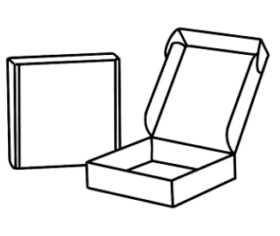 Bául
Bául Box-pallet
Box-pallet Displays
Displays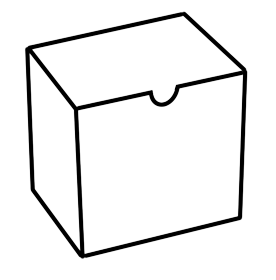 Estuchería
Estuchería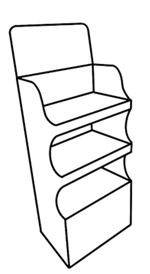 Expositor
Expositor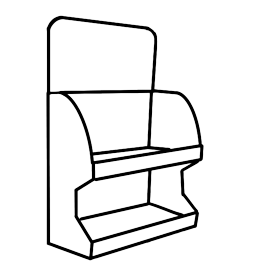 Exp.sobremesa
Exp.sobremesa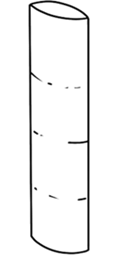 Tótem
Tótem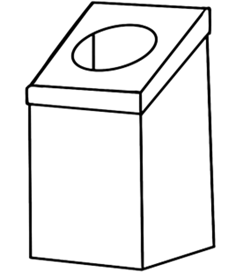 Otros
Otros
